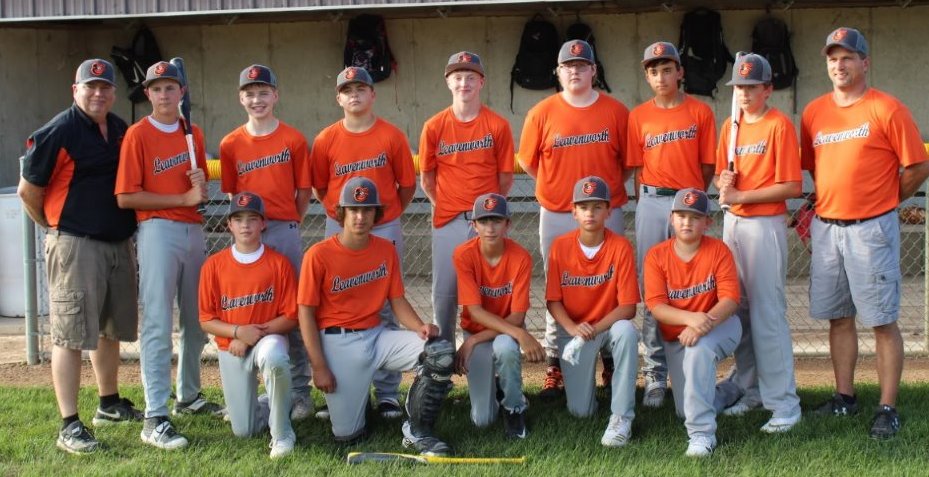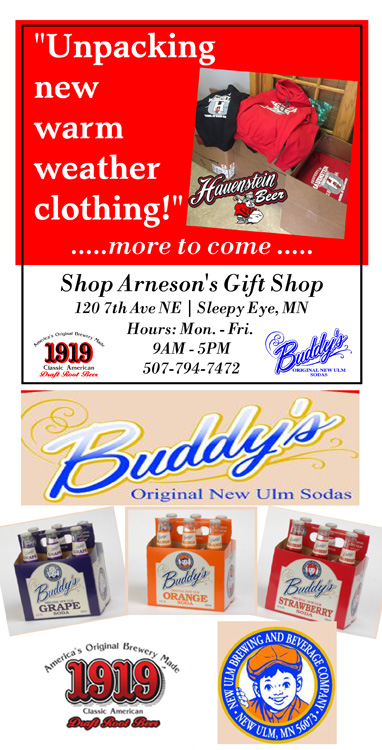In 1991, I helped with an exhibit at the Brown County Historical Society. We called it, “Baseball and Brown County, A Glove Affair.” That’s a little cheesy. But I still like it.
The exhibit was a look at the sweep of baseball through the years from New Ulm to Comfrey. We identified the first known game in Brown County between the Golden Gate Groundhogs and the Iberia Shoo Flies in 1870. Those early villages were settled by Irish and English who came from the East where baseball exploded in popularity after the Civil War. They quickly passed it to their German immigrant neighbors.
For 150 years baseball has been played in pastures and town lots here. It was played in ballparks that remain today and ballfields that are memories, some forgotten. A peak in popularity came after World War II when thousands watched the semi-pro Western Minny League in New Ulm, Sleepy Eye, and Springfield.
I remember New Ulm’s Otis Loose telling me if you drove to a rise west of New Ulm on a summer night, you could see the glow from any of five ballparks with lights. It is a magical image that says better than words what baseball means here. Leavenworth and Essig have since made that seven.
“A Glove Affair” could have been Bat Affair or a Ball Affair except for the word play. I thought of that the other day when I came across my old glove. I slipped it on my left hand, careful some critter hadn’t taken up residence.
Through years of baseball and softball, I had multiple gloves. Some wore out; some were replaced by a cooler model, one got lost at the Metrodome. Every glove is unique. Quality varies. You choose that by how many dollars you spend or get your parents to spend. Age takes its toll. The number of balls smacked into the pocket, the times it gets tossed on a dugout floor or infield dirt, those give it character. Scuffs and darkened padding are to a glove like wrinkles to a face.
At times I was better or worse at caring for my leather companion. Better was oiling it after a game with a ball rubber-banded in the pocket. Worse was letting it lay out in the yard under a night rain. In the end, it’s like us; we’ve only got so many games.
It is not exaggerating to say a ball player knows their glove intimately. It’s an extension of self. Glove on, crouched slightly, ready in the field, that formed-and-stitched leather becomes your hand. The way a gifted fielder takes the ball off the ground or out of the air is beautiful to watch. You know how amazing it is by having tried hundreds of times yourself.
All sports have their tools and the tactile sensations that come from using them in practice and competition. If a game was something you played and dreamt about as a kid, those sensations are imprinted in the part of your mind where warm and comfortable memories are stored.
My son played hockey and soccer, games I didn’t know. I was around those enough to sense the attraction of working a hockey stick or kicking about a soccer ball. I could see how a boy or girl could grow up feeling deep connection with those. When we visited Spain, it was joyful to watch children maneuver and manipulate a ball with their feet, almost like a dance, everywhere there were kids and open space. There was a good chance some of those kids were Lionel Messi in their minds, the Barcelona star. Same as I was Zoilo Versailles with my glove and a ball at that age.
I learned to appreciate those games, but baseball is where my memories are pooled. It’s not just the glove. To a now or former ballplayer, it is impossible to pick up a bat and not take hold of it as if you were stepping from the on-deck circle to the batter’s box. If you’re a righthander, right hand on top, left hand feeling for the knob. I grew up with wood, so label instinctively points up. Then it’s tapping an imaginary home plate, extending the bat in front of you, before cocking it over your shoulder. Ready. C’mon pitcher.
Alone in your garage or the middle of your farmyard, you raise the bat and drive an outside pitch to the right field wall or turn sharply on a pitch in, pulling it down the line. Since it’s imagination, the ball might as well explode off your bat, making pure and perfect contact.
There are other sensations unique to positions in the field. I caught a little but can’t say putting on those pads is a comforting memory. Those were akin to putting on football pads for me, more burden than pleasant recollection. But if you spent years crouched behind home plate, you probably are fond of that chest protector.
I played some first base. To this day, if I step on a ballfield, I like to go to first base and set my heels against the bag, ready to shift right or left depending where the infielder makes the throw. Sometimes on the farm, I put my heels up against a stone or board and go right or left with an imaginary glove to take an imaginary throw from an imaginary infielder. I do these things when Pam is gone.
Then there’s the ball itself. There is nothing that fits so well in a hand. Even a non-pitcher like me fooled around enough with the pitchers to know how to hold a curveball, forkball, screwball, knuckleball. The ball rolls around in my hand and my fingers take various positions guided by the seams.
A baseball has a smell that is part of the memory flood when you pick it up, a musty, hide-like smell. I have read that our sense of smell is the strongest placeholder of memories. Baseball has plenty of those: dewy grass of a morning practice, a dugout blend of seeds and bubblegum, the dust that lingers after sliding into a base.
There is a quote by pitcher and writer Jim Bouton about holding a ball. I suspect a lot of tough old ballplayers got a clench in their throat the first time they heard it. “A ballplayer spends a good piece of his life gripping a baseball, and in the end, it turns out that it was the other way around all the time.”
I tossed some pitches to my four-year old grandson last weekend. Who knows if baseball will be what he gravitates toward? Levi has a million more options than a farm kid growing up sixty years ago. We’ll put a ball in Levi’s hand. We’ll have to see if it holds on to him.







